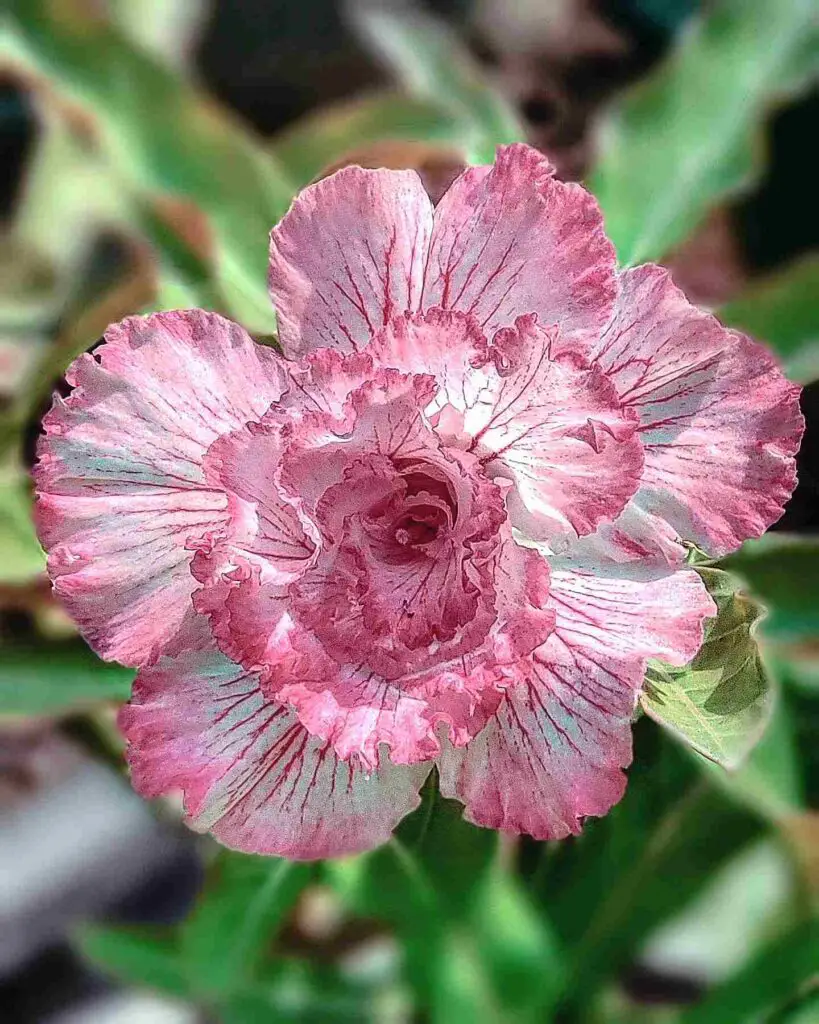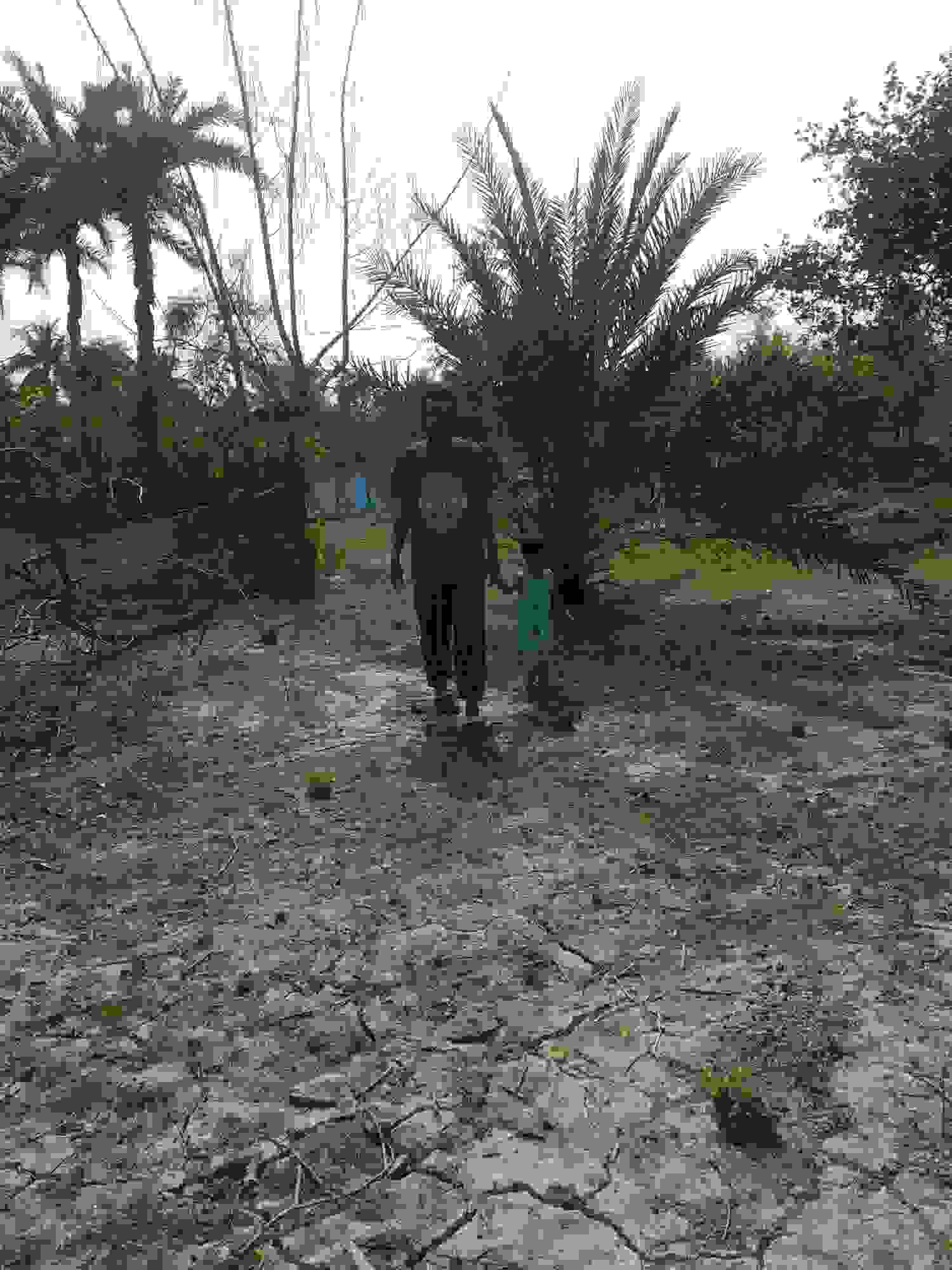If you’re a proud Desert Rose owner, you know how stunning these plants can be. However, when temperatures dip too low, it can be a real challenge to maintain their health. Desert Rose cold tolerance is an important factor to consider if you live in cooler climates.
While these vibrant, flowering beauties thrive in warm temperatures, they can suffer when exposed to the cold. In this article, we’ll explore the temperature limits for Desert Roses and offer tips to keep them flourishing even in less-than-ideal conditions.

How Cold Is Too Cold?
Desert Roses (Adenium obesum) are native to arid regions with hot climates, making them extremely sensitive to low temperatures. While they can tolerate brief dips in temperature, exposure to cold for extended periods can harm or even kill the plant. So, what temperature is too cold for Desert Roses?
Generally, Desert Roses begin to struggle when the temperature drops below 50°F (10°C). If exposed to temperatures consistently below 40°F (4°C), they are at risk of serious damage, especially to the roots and stems. Prolonged cold exposure can cause the plant to go dormant or die back entirely.
Temperature Limits for Desert Rose Cold Tolerance:
- Above 50°F (10°C): Ideal growing conditions, Desert Roses thrive.
- 40°F (4°C) to 50°F (10°C): Tolerable, but growth slows down.
- Below 40°F (4°C): Risk of damage, especially to roots and stems.
- Below 32°F (0°C): Freezing temperatures can be fatal for Desert Roses.
Protecting Your Desert Rose:
- Bring it indoors: If you live in a region that experiences frost, consider moving your Desert Rose inside during the colder months.
- Cover it up: Use frost blankets or burlap to shield the plant from sudden cold snaps.
- Provide warmth: Keeping your Desert Rose in a spot with consistent warmth, like near a south-facing window, can help maintain its health.
By understanding the temperature thresholds and taking proper precautions, you can help ensure your Desert Rose stays beautiful year-round, even in cooler weather.
Preparing Your Desert Rose for Cold Weather
If you live in a region that experiences cold temperatures, it’s essential to prepare your Desert Rose before the chill sets in. Proper preparation can help safeguard the plant from cold damage and increase its chances of surviving harsh winter conditions. Here are a few tips to prepare your Desert Rose for cold weather:
1. Bring Your Desert Rose Indoors
Desert Roses are not frost-tolerant, so moving them indoors before the first frost is one of the most effective ways to protect them. Find a sunny location inside your home, preferably near a south-facing window, where the plant can continue to receive adequate light. If you can’t bring your plant indoors, consider placing it in a greenhouse or a cold frame.
2. Prune the Plant
Pruning your Desert Rose before the cold weather hits can help it conserve energy. Remove any dead or damaged stems to prevent them from becoming a breeding ground for pests or diseases. Be sure to leave the healthy branches intact, as Desert Roses can go dormant in winter and might need extra energy to revive in spring.
3. Reduce Watering
During the colder months, Desert Roses go into a semi-dormant state and require less water. Overwatering during this time can lead to root rot or fungal issues. Reduce watering to once every two weeks or when the soil feels dry to the touch. It’s essential to ensure that the plant’s container has proper drainage, so water doesn’t collect at the bottom.
4. Provide Extra Heat and Light
If bringing your Desert Rose indoors isn’t an option, you can provide it with extra warmth and light using a grow light or a space heater. These will simulate the conditions of a warmer environment and help the plant stay healthy. Just be careful not to place the plant too close to the heat source to avoid drying out the air around it.
By taking these preventive measures, you’ll ensure your Desert Rose stays protected and healthy, even when temperatures drop.
Outdoor Protection Strategies
For those who prefer to keep their Desert Rose outdoors year-round, protecting the plant from cold temperatures is crucial. Fortunately, there are several strategies you can implement to help shield your Desert Rose from winter’s chill without needing to bring it indoors.
1. Use Frost Covers
Frost covers, such as burlap or frost cloth, are excellent for protecting your Desert Rose from freezing temperatures. Drape the cover over the plant, ensuring it doesn’t touch the leaves or stems directly. This will create an insulating layer, helping to keep the plant warm during cold nights. Make sure to remove the cover during the day when temperatures rise to prevent the plant from overheating.
2. Create a Windbreak
Cold winds can be just as damaging as freezing temperatures. To protect your Desert Rose from wind chill, consider building a simple windbreak using fences, walls, or strategically placed plants. This barrier will reduce the amount of cold air hitting the plant and help maintain a more stable temperature around it.
3. Mulch Around the Base
Applying a thick layer of mulch around the base of your Desert Rose helps insulate the roots and retain heat during cold weather. Organic materials like straw, wood chips, or pine bark are ideal options. Mulching will also help protect the roots from frost, which can cause irreparable damage if left exposed to freezing temperatures.
4. Elevate the Plant
Keeping your Desert Rose elevated from the ground can protect it from the coldest temperatures. If the plant is in a pot, place it on a raised platform like a wooden pallet or brick stack. This will prevent the cold from seeping up from the ground, reducing the risk of root damage.
5. Consider Container Gardening
If your Desert Rose is in a container, it’s easier to move the plant to a more protected location. On particularly cold nights, you can bring the container inside the garage or a sheltered area. Alternatively, you can place the container inside a large pot or wrap it with insulating material to help maintain warmth around the roots.
By taking these steps, you can protect your Desert Rose outdoors, ensuring it survives even the coldest of winters.
Common Mistakes to Avoid
When it comes to protecting your Desert Rose during colder weather, there are several mistakes that can unintentionally harm the plant. By being aware of these common errors, you can take the right steps to ensure your Desert Rose remains healthy throughout the winter months.
1. Ignoring Temperature Drops
One of the most common mistakes is waiting too long to take action when temperatures start to drop. Desert Roses are vulnerable to frost, and even a brief exposure to freezing temperatures can cause irreversible damage. It’s essential to monitor the weather forecast and take protective measures well before the first frost hits. Don’t assume the plant can handle the cold; it’s better to be proactive than to deal with a damaged plant later.
2. Overwatering in Winter
During the colder months, Desert Roses enter a period of dormancy and require much less water than in warmer months. Overwatering during winter can lead to root rot and fungal diseases. Many gardeners mistakenly continue to water their Desert Rose as frequently as they would in the summer, not realizing that the plant is not actively growing and its water needs are minimal. To avoid this, ensure the soil is completely dry before watering and reduce the frequency.
3. Placing the Plant in Direct Contact with Cold Surfaces
Another mistake is placing your Desert Rose directly on cold surfaces, such as concrete or tile, without any insulation. These surfaces can draw heat away from the plant, making it more susceptible to cold damage. When growing Desert Roses in pots outdoors, always elevate the container off cold surfaces. Using a raised platform, brick, or even a layer of insulation under the pot can help keep the roots warmer.
4. Improper Pruning
While pruning can be helpful, over-pruning or improper cutting can leave your Desert Rose more vulnerable to the cold. Cutting back too much during the winter months can expose the plant to cold injury. Always prune selectively, removing only dead or damaged growth to prevent excessive stress on the plant.
5. Using Plastic to Cover the Plant
While covering your Desert Rose with a frost cover is a great way to protect it, using plastic can be harmful. Plastic traps moisture, leading to mold growth and causing the plant to overheat when exposed to the sun. Instead, use breathable materials like burlap or frost cloth that will allow air circulation while still offering insulation against the cold.
By avoiding these common mistakes, you can ensure that your Desert Rose stays protected from cold weather and thrives through the winter. Taking the right precautions will help your plant emerge healthy and ready to bloom again in the warmer months.
Dealing with Cold Damage
Even with the best preparations, Desert Roses can sometimes still experience damage from extreme cold weather. If you notice signs of frostbite or damage after a cold snap, it’s important to take quick action to help your plant recover. Here’s what you can do if your Desert Rose shows signs of cold damage:
1. Assess the Damage
Start by carefully inspecting the plant for signs of cold damage. Common indicators include:
- Brown or blackened stems and leaves: These parts of the plant may appear waterlogged or mushy if they’ve been severely affected.
- Wrinkled or shriveled leaves: Cold injury can cause dehydration in the plant, resulting in drooping or wrinkling.
- Soft or mushy stems: If the stems feel soft and mushy, it’s a sign that the plant may have been exposed to freezing temperatures for too long.
2. Trim Back Damaged Parts
If the damage is not too severe, begin by trimming away any affected stems and leaves. Use clean, sharp pruning shears to cut back any parts that have turned brown or black. This will prevent further stress on the plant and allow it to focus its energy on healthier growth. Always sanitize your pruning tools before and after use to prevent the spread of disease.
3. Check the Roots
Root damage can be a major concern if your Desert Rose was exposed to freezing temperatures. To check for root rot, carefully remove the plant from its pot and inspect the roots. Healthy roots should be firm and white, while damaged roots will appear mushy, brown, or black. Trim away any damaged roots with sterilized scissors. If a significant portion of the roots is damaged, it may be best to allow the plant to dry out and recover in a warmer, sheltered location.
4. Reassess Watering Needs
After cold damage, your Desert Rose will need some time to recover. Reduce watering to prevent further stress on the plant. Only water when the soil has completely dried out. This helps prevent root rot and gives the plant the opportunity to heal. If you’ve brought the plant indoors, make sure it’s in a warm, sunny spot to encourage recovery.
5. Provide Proper Post-Damage Care
During recovery, ensure your Desert Rose receives plenty of light and warmth. Place it in a bright, sunny location and avoid subjecting it to further stress, like overwatering or sudden temperature changes. If your plant is in a container, ensure proper drainage to avoid waterlogging, which could worsen the root damage.
6. Fertilize Carefully
While Desert Roses generally don’t require frequent fertilization during the colder months, a light feeding with a balanced fertilizer can support recovery. Wait until the plant begins to show new growth in the spring before applying any fertilizer. Over-fertilizing before then can harm the plant and hinder its recovery.
By following these steps, you can help your Desert Rose bounce back from cold damage and get it back to its vibrant, blooming self when the temperatures rise again.
Long-Term Care for Your Desert Rose
Once your Desert Rose has survived a cold spell and recovered from any damage, it’s time to focus on long-term care. Desert Roses are relatively low-maintenance, but they do require consistent care to thrive year-round. Here’s how to ensure your plant stays healthy and vibrant for years to come:
1. Optimal Temperature and Light Conditions
Desert Roses thrive in warm temperatures and full sunlight. Ensure that your plant receives plenty of direct light, ideally 6–8 hours per day, to encourage healthy growth and flowering. If kept indoors, place your Desert Rose near a south-facing window or under a grow light during the winter months. The ideal temperature range for Desert Roses is between 60°F to 80°F (15°C to 27°C), with a brief drop in temperature during the nighttime being acceptable.
2. Watering and Drainage
Desert Roses are drought-tolerant, but that doesn’t mean they can survive long periods of neglect. Water your plant thoroughly when the soil feels dry to the touch, but always ensure the pot has proper drainage to prevent water from sitting at the bottom. Overwatering can lead to root rot, especially in colder months when the plant is dormant. During winter, reduce the watering frequency to once every two weeks or whenever the soil feels completely dry.
3. Feeding and Fertilization
Desert Roses benefit from regular feeding during the growing season, typically in spring and summer. Use a balanced fertilizer with equal parts nitrogen, phosphorus, and potassium, or a specialized cactus fertilizer. Avoid fertilizing during the dormant period in fall and winter, as this could cause stress on the plant. Be cautious not to over-fertilize, as this can lead to excessive foliage growth at the expense of flowers.
4. Pruning and Shaping
Pruning your Desert Rose regularly helps maintain its shape and encourages new growth. Trim off any dead or leggy stems, which can prevent the plant from becoming too sparse. Pruning also helps direct energy into producing healthy flowers. After the flowering season, you can prune back any spent blooms or damaged branches to encourage fresh growth in the next season.
5. Repotting
As your Desert Rose grows, it may need to be repotted every few years. The best time to repot is during the spring when the plant is coming out of its dormant period. Choose a pot that’s one size larger than the current one, ensuring it has good drainage. Use a well-draining soil mix, such as cactus or succulent soil, to avoid water retention and prevent root rot. Be careful not to disturb the roots too much during repotting.
6. Pest and Disease Management
Although Desert Roses are relatively resistant to pests, they can occasionally be affected by aphids, mealybugs, or spider mites. Regularly inspect your plant for signs of pests, such as sticky residue on leaves or visible insects. If pests are found, treat the plant with an appropriate insecticide or use natural remedies like neem oil. Proper watering and good air circulation around the plant will also help reduce the risk of fungal diseases and mildew.
7. Temperature Management
Throughout the year, be mindful of temperature fluctuations. In summer, make sure your Desert Rose is not exposed to extreme heat for prolonged periods, as this could stress the plant. Conversely, in the winter, ensure it’s protected from frost or cold drafts. A consistent environment, both in terms of temperature and humidity, will allow your Desert Rose to thrive long-term.
By providing these long-term care practices, you’ll ensure your Desert Rose continues to thrive, bloom beautifully, and add vibrancy to your garden or home for many years to come. Regular attention to its needs will help the plant grow stronger and more resilient with each passing season.
Final Thoughts
Desert Rose cold tolerance can be a challenge in cooler climates, but with the right precautions, your plant can thrive. By understanding its temperature limits, preparing for cold weather, and providing long-term care, you’ll ensure your Desert Rose remains healthy and vibrant through all seasons.

I’m Shofi, a passionate gardener and blogger. I have 10+ years of experience in gardening and hold certifications in horticulture and garden design. I share my knowledge and skills through my garden blog to inspire and educate others on the joys of gardening. I try to provide valuable information and create a community for gardeners of all levels to connect and learn. My ultimate goal is to inspire others to start their own gardens and connect with nature.

